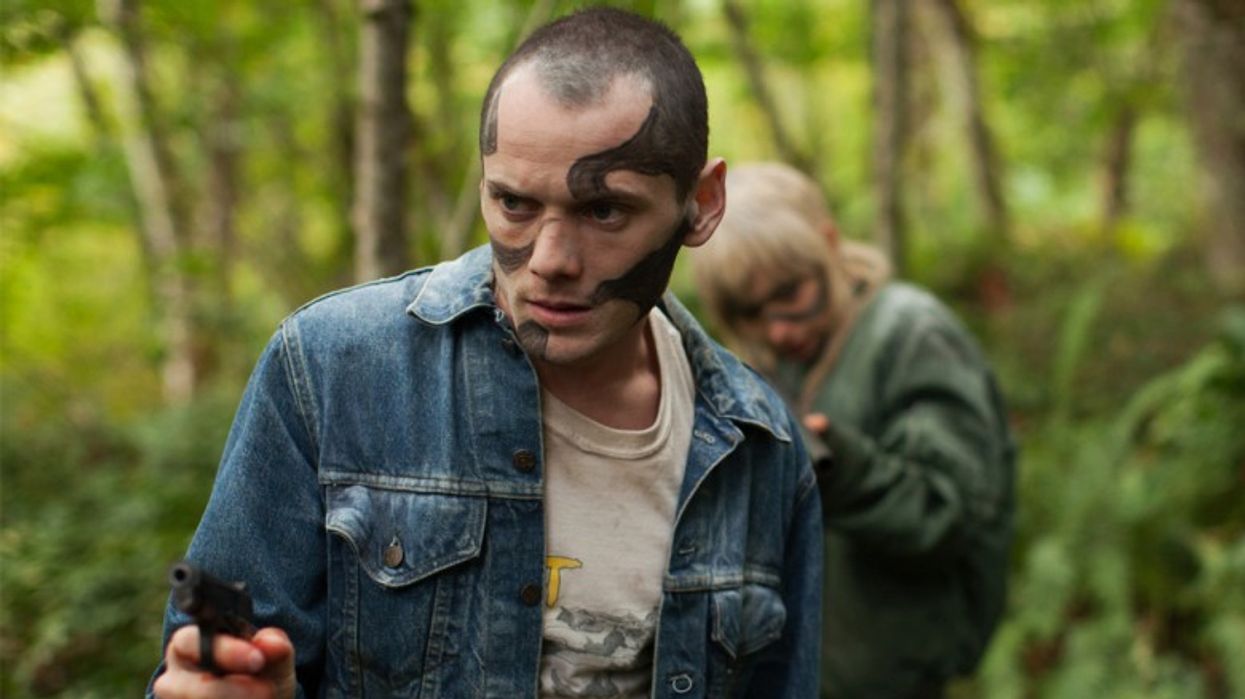Watch: 'Blue Ruin', 'Green Room' & Jeremy Saulnier's Art of Suspense
The secret to making a great thriller is to get your audience hooked early.

When it comes to making a great suspense thriller, Jeremy Saulnier stands out as one of today’s most talented filmmakers. His two latest features, Blue Ruin and Green Room carry on a long line of tradition in captivating audiences with fundamental screenwriting and filmmaking skills that keep us both active and engaged.
In his latest video essay, CinemaWizardBoy breaks down some of the techniques which Saulnier uses most effectively. All of these tactics are combined in a way to keep the audience constantly guessing about what could happen next.
Use an "omniscient camera"
The first thing pointed out is what the essayist refers to as the “omniscient camera.” This style of filmmaking is a great way to build a suspenseful atmosphere. This voyeuristic quality championed by Hitchcock and used to great effect by John Carpenter, causes the audience to feel as if there is something just inherently wrong with the way they are seeing the action unfold. It’s almost as if they’re thrown into the shoes of a peeping Tom. Slow dolly movements closing in on the environment ramp up this feeling tenfold, giving the audience time to think about what could possibly be in store next.
Establish a sympathetic protagonist
One thing Saulnier does particularly well in Blue Ruin is he establishes a sympathetic character almost immediately to engage the audience. He is a true master of presenting his protagonists as everyday people that are thrown into extraordinary situations. With these characters in place, the audience is immediately more invested in their well being.

Create a menacing antagonist
Of course, the obvious next step to creating a good protagonist is creating a menacing antagonist. This should be someone that you can really pit your hero against in contrast. The more powerful or domineering the threat is written, the more suspense you will naturally see as a result. Give us a window into seeing just how bad this person is. The audience will only be driven towards more uncertainty if the protagonist is up against an unbeatable adversary.
For this very same reason, it’s important that the protagonist has a strong motivation for taking on the antagonist. If indeed the protagonist is to fight a losing battle, there needs to be a reason for the protagonist to face death in doing so. This motivation should be intense enough to spark the character to action, no matter how dire the consequences.

Make your protagonist flawed
A foolhardy attempt at achieving this goal could be one of many character flaws your protagonist embodies. Character flaws are another great way to lead the audience to suspect that worse things are to come. Suspense is, of course, all about building the audience's expectations and when you get to a point where you’re ready to throw your hero into despair, there will be even more doubt that the hero will be able to survive it.
Defy the audience's expectations
Saulnier once said he will literally write a character into obstacle after obstacle until he can’t find a way to get that character out of trouble anymore. At this point, he simply kills off the character, which brings us to the final element the director uses to great success: surprise. You can build up the audience’s expectations as much as you want during the course of the film, but its equally as fun to throw them off course.










![Ethos, Pathos, Logos: 20 Effective Ways to Advertise [Infographic]](https://nofilmschool.com/media-library/ethos-pathos-logos-20-effective-ways-to-advertise-infographic.jpg?id=34064614&width=600&height=600&quality=90&coordinates=560%2C0%2C0%2C0)

